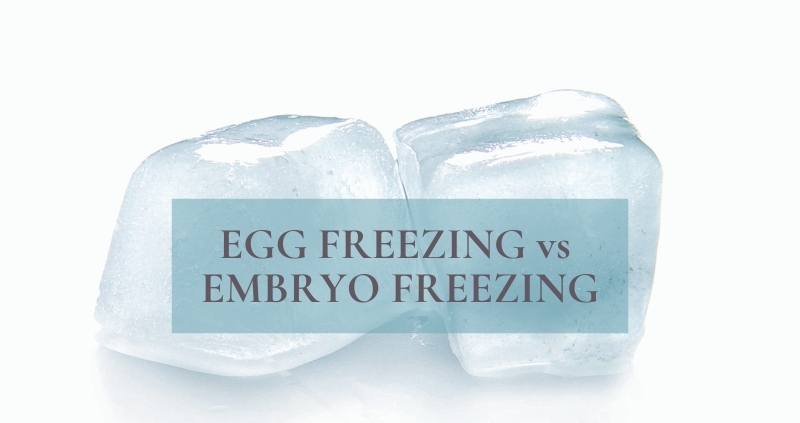What is the difference between egg freezing and embryo freezing?
Since Jennifer Aniston opened up about her own experiences with IVF and expressed her regret that she had not undergone egg freezing earlier, even more women have begun exploring their fertility preservation options.
Women now have the option of freezing their eggs or embryos, but there are critical differences between the treatments that can determine the best choice for them.
The collection stage
Both procedures start with the same basic premise of egg collection. You will self-administer hormone injections, stimulating the ovaries to produce mature eggs over 8 to 12 days. We will monitor your progress during this stage, and your eggs will be collected at the optimal time. This is a minor surgical procedure performed under sedation in the clinic. The collected eggs are then transferred to our laboratory.
To fertilise or not fertilise
This is the crucial difference between the two treatments. Before they are frozen, the eggs can be fertilised in our laboratory using either your partner’s sperm or donor sperm.
This takes place on the same day as the egg collection. Our embryologist will try to fertilise all mature eggs using intracytoplasmic sperm injection, or ICSI. If successful, the fertilised eggs will develop into an embryo. Over the next five to six days, the embryos will be carefully monitored as they hopefully progress to the blastocyst stage. The embryos that successfully develop to this stage are then frozen.
The freezing and storage process
Both eggs and embryos are frozen and stored using a method known as cryopreservation. Water in the cell is replaced with a freezing solution called a cryoprotectant which prevents this water from crystallising in the freezing process. The freezing process is called vitrification and entails flash freezing, instantaneous cooling from 37oC to -196oC. The eggs or embryos are then stored in liquid nitrogen.
Using your embryos or eggs
When you’re ready to use your embryos or eggs, our embryologist will thaw them. An embryo that has successfully thawed can be transferred directly back into the body. Frozen eggs that survive the thawing process will then be injected with a partner or donor’s sperm to fertilise them. The fertilised eggs will then develop into embryos and after five to six days can then be transferred to the womb.
The pros and cons of egg freezing vs freezing embryos
Previously, slow-freezing technology was used to freeze eggs or embryos. The cells were cooled very slowly over a couple of hours to avoid ice crystallisation until they reached the optimal storage temperature. Embryos were thought to survive the freezing and thawing process better than eggs as the latter are large size cells with a high-water content, so they are more susceptible to ice crystals forming and causing cellular damage.
The introduction of vitrification or flash freezing has largely eliminated this difference, and the survival rates when freezing eggs versus embryos are now very similar.
Choosing to freeze embryos means you have more information on how many eggs were healthy enough to fertilise and begin development. However, the most important difference is that freezing eggs rather than embryos grants women reproductive autonomy, giving them more options in the future.
Aria Fertility Counselling
Discussing your treatment choice with one of our counsellors can be a very rewarding and empowering session. At Aria, we wish for everyone undergoing fertility preservation treatment to have a full understanding of choices they are making and implications these may have for the future. Our wonderful counsellors will always be able to spare time to have a chat with you and help you come to a decision if you feel you require their expert support.
If you have more questions about our fertility preservation options, call +44 (0) 203 263 6025 or email admin@ariafertility.co.uk to arrange a consultation with one of our fertility specialists.







